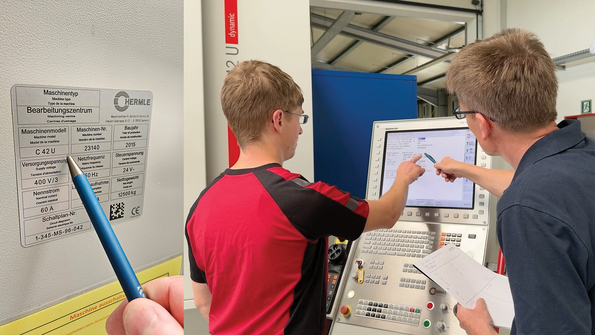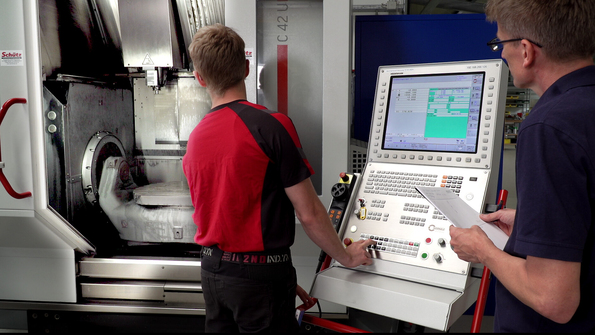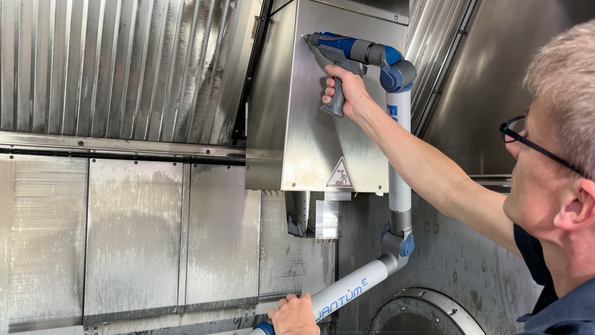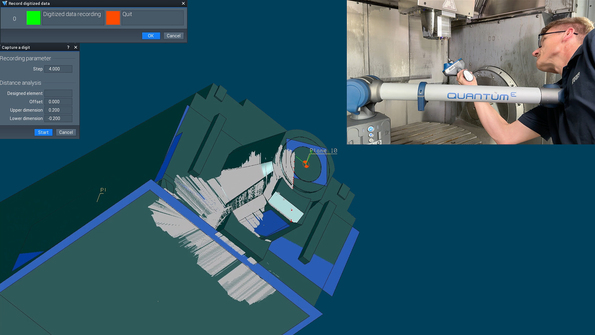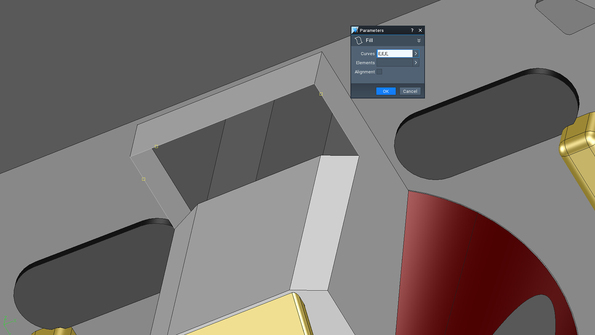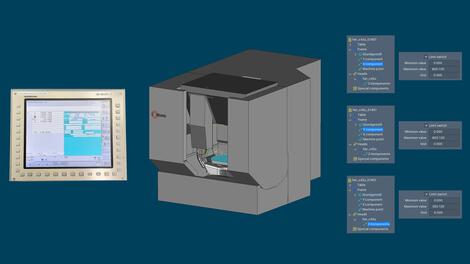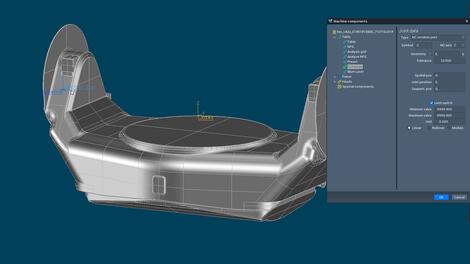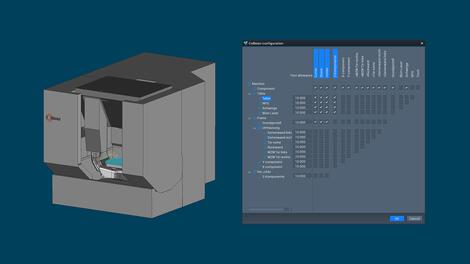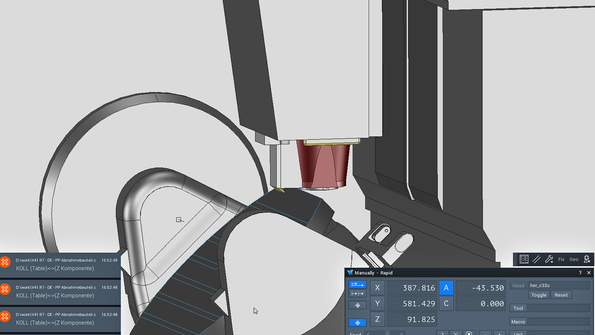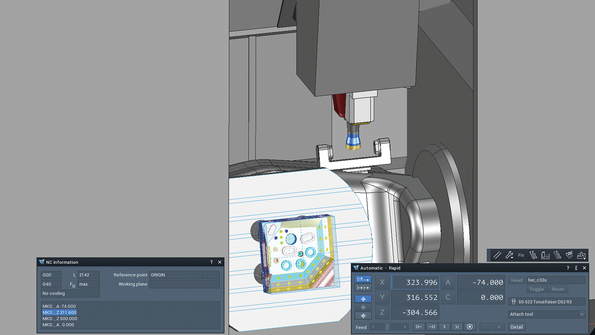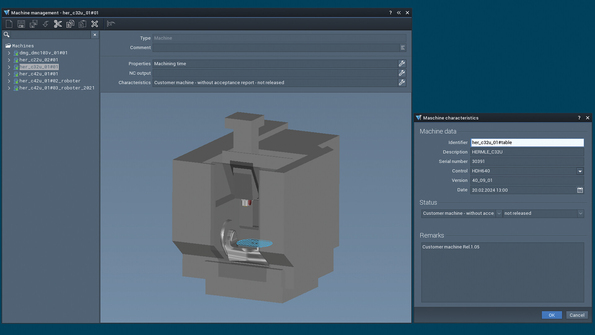Full control over the entire machine
Maximum safety with post-processor and virtual machine in the same application
Delivering safe, effective and collision-free NC programs directly to the machines is the Tebis advantage. This means that planning, programming and verification are performed right in the CAM environment using digital twins of the real production environment: The CAM programmer uses all of the manufacturing-related data from the machines and tools used, checks the machining for collisions in the virtual machines in the CAM software and corrects any errors. The output programs are completely collision-checked. In this chain, the virtual machines are one of the most important links.
Tebis draws a distinction between the virtual machines that are standard catalog machines and those that we call customer machines. For catalog machines, the simulation is based on the manufacturer's specifications for the machine envelope. For customer machines, all movements within the machine space and all actual geometries are also fully accounted for – and this service is unique to Tebis. The machine logic is stored in full in the virtual machine. The entire machining space can therefore be used to the maximum. The real manufacturing can also be fully simulated and controlled in the virtual CAD/CAM environment, saving time even before NC output.
Of the more than 6,000 virtual machines used by Tebis customers worldwide, more than 60 percent are custom-configured customer machines.
Your benefits with Tebis
- Maximum safety
- Complete testing with all kinematics, including limit switches and intermediate movements
- Special machine characteristics are accounted for
- High efficiency
- The potential of highly dynamic machining centers can be fully exploited
- The high safety factor enables full utilization of the entire working space, even with small machines: Even larger parts can be produced in the tightest spaces with no collisions
- Time-saving and easy to use
- No additional simulation software required
- The entire machine logic is fully integrated
- No additional correction iterations are required
- No design of interfering geometries required
- Less effort required for CAM programming
- Highly automated and at the same time flexible
- Virtual machine behavior can be adjusted at any time
- Mixed operation of customer and catalog machines further reduces idle time and ensures optimal utilization of the machinery
- Efficient and reliable
- End-to-end process chain in a single application and just one post-processor for all processing types
- No risk
- Full warranty for machines measured and approved by Tebis
3. Digitalize machine
The geometries of tool heads, spindles, cooling nozzles, laser equipment and units can vary, even in machines of the same type. The machine data are therefore recorded individually with all possible collision elements. Reference points also need to be digitalized so that movements and geometries can be correctly assigned.
5. Configure virtual machine
The entire machine logic is stored in the virtual machine. This is realized by transferring all values recorded on the real machine to the virtual machine, including limit switch positions, tool change positions, reference points and safety positions.
At the same time, the individual elements are structurally linked in a "kinematic chain".
The collision matrix can also be used to configure the elements that need to be accounted for in the collision analysis.
The Tebis post-processor is precisely customized for this configuration. The machine uses the intelligent programming logic to decide how to perform stepover and retract movements in each critical situation.
Practical applications
Tebis machine technology enables full control of highly complex processes in the machining space. The virtual machine can also be custom-configured to meet customer-specific requirements.
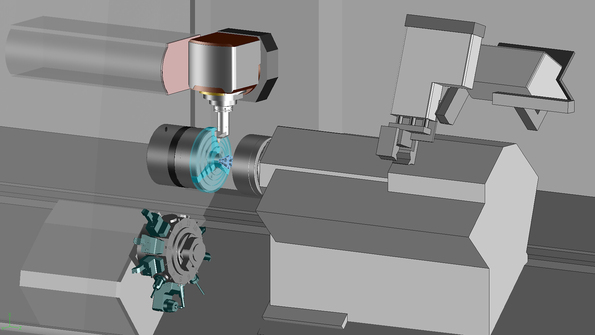
Part transfer on a turning/milling machine
The virtual machine independently determines how to perform the part transfer with no need for input from the CAM programmer or machine operator: In this example, it first selects a free turret position and safely moves the turret under the main spindle. After the cut-off tool has been changed, the machine head moves along the B axis to a safe position. Only then does the sub-spindle grip the part so that it can finally be cut off.
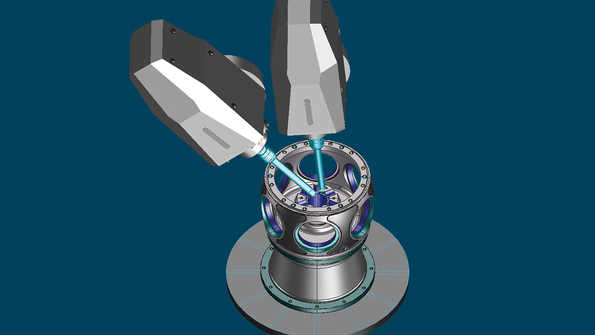
Part tilt-direction change with no retract movements
Specifically configured to meet customer requirements: The tilt-direction change can be safely performed with the part in 5-axis simultaneous machining. There’s no need for a retract to the safety position.
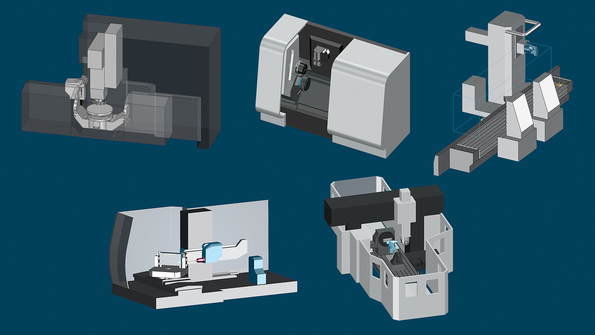
All common machine types are integrated
The Tebis machine library includes all common machine types for different manufacturing methods. The spectrum ranges from simple CNC machines that are suitable for one specific machining process like milling or turning to multifunctional high-performance machine centers on which the part undergoes multiple machining processes on a single machine. Changeable heads and pick-up stations for all tools are also represented one-to-one.



